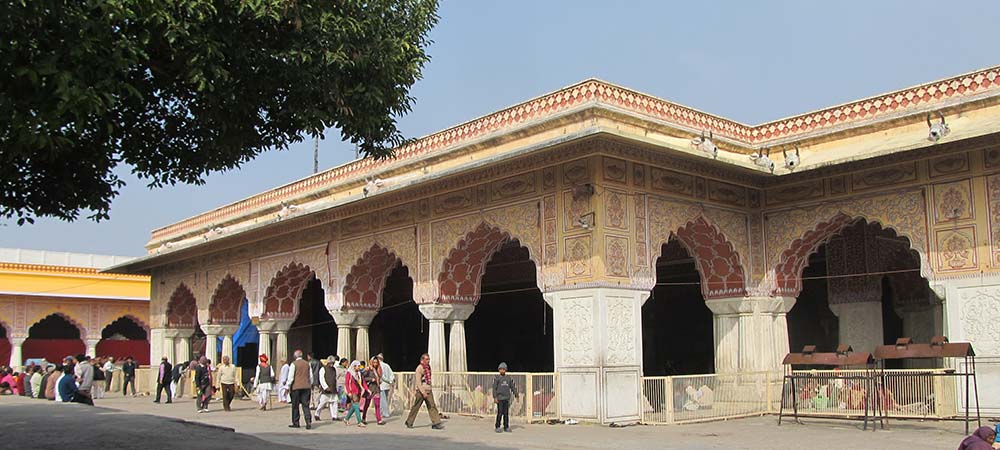Jaipur City, Rajasthan
The fortified city of Jaipur, in India’s north-western state of Rajasthan was founded in 1727 by Sawai Jai Singh II. Unlike other cities in the region located in hilly terrain, Jaipur was established on the plain and built according to a grid plan interpreted in the light of Vedic architecture. The streets feature continuous colonnaded businesses that intersect in the centre, creating large public squares called chaupars. Markets, stalls, residences and temples built along the main streets have uniform facades. The city's urban planning shows an exchange of ideas from ancient Hindu and modern Mughal as well as Western cultures. The grid plan is a model that prevails in the West, while the organization of the different districts refers to traditional Hindu concepts. Designed to be a commercial capital, the city has maintained its local commercial, artisanal and cooperative traditions to this day.
Jaipur is the capital city of Rajasthan in northwestern India. It was founded in 1727 A.D by Maharaja Sawai Jai Singh II who was the ruler of Amer.
Jaipur is also known as the ‘Pink City of India.’ It was called so because in 1876, Maharaja Ram Singh ordered to paint the entire city in the colour Terracotta Pink (considered a colour of hospitality) to welcome the Prince of Wales and Queen Victoria. On July 6th 2013, Jaipur became a part of World Heritage Sites.
It was planned and designed by the architect Vidyadhar Bhattacharya using Shilpa-Shastra, a Hindu architectural tradition. The city is built in a grid type system with wide straight avenues, roads, streets and lanes.
Jaipur has a rich tradition of manufacturing jewellery that can be traced back to the early 1700s. The Maharajas encouraged the migration of skilled craftsmen to the city. By the twentieth century, the coloured stone cutting industry was also introduced for which the city is known internationally. Craftsmen are known to produce beautiful work in jewellery and these included jewellers and stonecutters. They embraced enamelling and gemstones which were carefully made from both front and back. Rough and unpolished stones were imported, cut, lightly polished and sold all over India and abroad. Johri Bazaar is the oldest jewellery market set up by Maharaja Jai Singh II which marked the beginning of the Jewellery industry of Jaipur. Traditional Rajasthani jewellery is a mix of opulence and colour. A typical Rajasthani jewellery piece has a large flat-shaped rough or flat-cut Polki diamonds. It is colourful enamel jewellery, finely finished on the front and back giving a regal appearance. These pieces were worn by the Maharajas of Jaipur. Some of the traditional items of Rajasthani jewellery are rakhdi (head ornament), tussi (necklace), baju bandh (armlet), ariya (a special necklace worn by Rajputs), gokhru (bracelet), and page (anklet).
Apart from jewellery, Jaipur is also known for its handicrafts, fabrics and carpets. The city also manufactures toys made of ivory, sandalwood and shells which are in high demand.
The city has multiple architectural buildings from majestic forts and havelis attracting tourists from all over the world. Amber Fort is one such sight built by Raja Man Singh. The fort is a result of the amalgamation of Mughal and Rajasthani Architecture. Another popular sight in Jaipur is Hawa Mahal which was built by Maharaja Sawai Pratap Singh in 1799. An example of Mughal and Rajasthani architecture is the City Palace Museum which houses rare manuscripts, miniature art, paintings and other articles used by the royal families of Jaipur. Nahargarh Fort is an example of Indo-European architecture and a famous place of retreat built by Jai Singh II in 1734.
 Government of Indiaa
Government of Indiaa


 Recognizing the ongoing need to position itself for the digital future, Indian Culture is an initiative by the Ministry of Culture. A platform that hosts data of cultural relevance from various repositories and institutions all over India.
Recognizing the ongoing need to position itself for the digital future, Indian Culture is an initiative by the Ministry of Culture. A platform that hosts data of cultural relevance from various repositories and institutions all over India.
